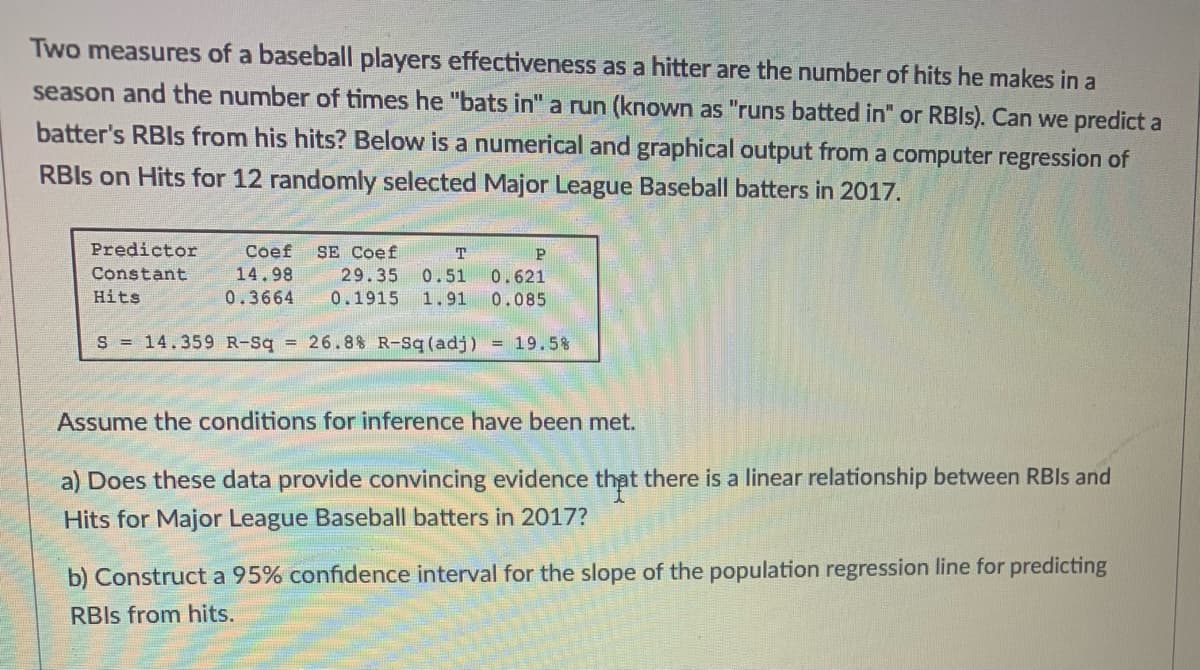Two measures of a baseball players effectiveness as a hitter are the number of hits he makes in a season and the number of times he "bats in" a run (known as "runs batted in" or RBIS). Can we predict a batter's RBIS from his hits? Below is a numerical and graphical output from a computer regression of RBIS on Hits for 12 randomly selected Major League Baseball batters in 2017. Predictor Coef SE Coef T Constant 14.98 29.35 0.1915 0.51 0.621 Hits 0.3664 1.91 0.085 S = 14.359 R-Sq = 26.8% R-Sq (adj) = 19.5% Assume the conditions for inference have been met. a) Does these data provide convincing evidence that there is a linear relationship between RBIS and Hits for Major League Baseball batters in 2017? b) Construct a 95% confidence interval for the slope of the population regression line for predicting RBIS from hits.
Correlation
Correlation defines a relationship between two independent variables. It tells the degree to which variables move in relation to each other. When two sets of data are related to each other, there is a correlation between them.
Linear Correlation
A correlation is used to determine the relationships between numerical and categorical variables. In other words, it is an indicator of how things are connected to one another. The correlation analysis is the study of how variables are related.
Regression Analysis
Regression analysis is a statistical method in which it estimates the relationship between a dependent variable and one or more independent variable. In simple terms dependent variable is called as outcome variable and independent variable is called as predictors. Regression analysis is one of the methods to find the trends in data. The independent variable used in Regression analysis is named Predictor variable. It offers data of an associated dependent variable regarding a particular outcome.

Trending now
This is a popular solution!
Step by step
Solved in 3 steps




